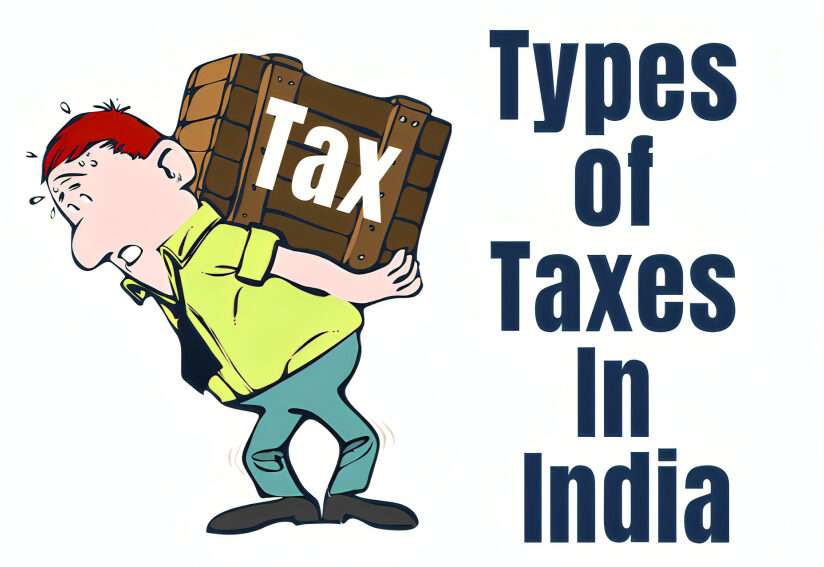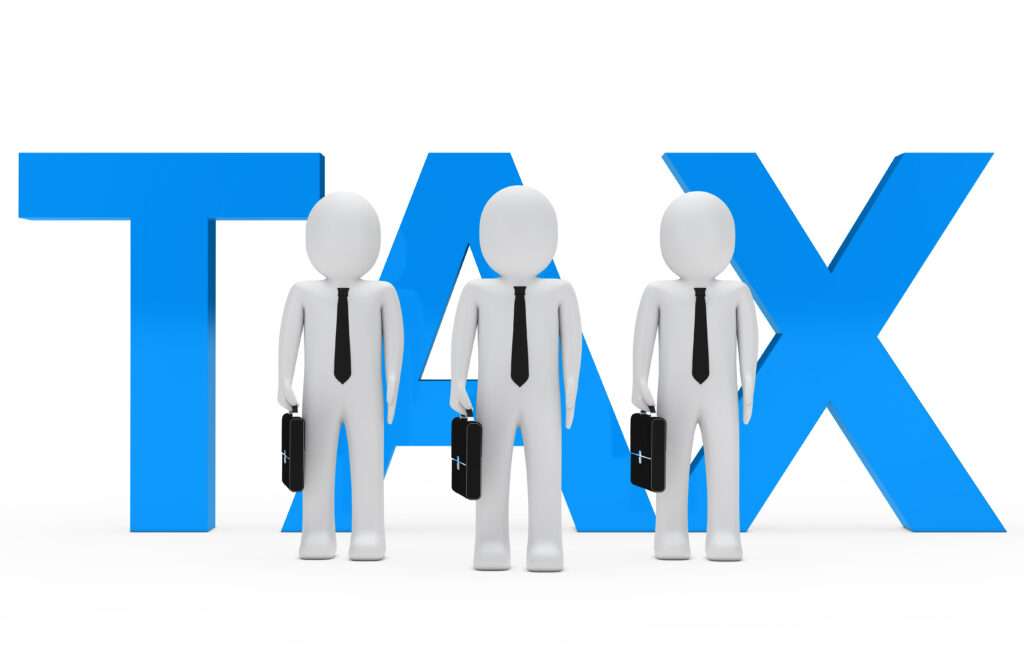
Table of Contents (हिंदी में पढ़िए)
The Unsung Heroes of India’s Economic Marvel (हिंदी में पढ़िए)
Imagine a world without the vibrant tapestry of small businesses that dot the landscape of India’s bustling cities and quaint villages. It would be a dull and lifeless canvas, devoid of the vibrancy and innovation that these micro, small, and medium enterprises (MSMEs) bring to the table. These unsung heroes are the beating heart of our nation’s economic marvel, pumping life into every sector and industry imaginable.
According to the Ministry of Micro, Small and Medium Enterprises, there are over a staggering 63 million registered MSMEs in India, collectively employing a workforce of 120 million individuals. That’s a mind-boggling statistic that underscores the pivotal role these tiny titans play in sustaining livelihoods and driving progress across the length and breadth of our incredible nation.
But hold on, my friends, because the story doesn’t end there. Much like the underdog in a classic tale, our beloved MSMEs have often found themselves grappling with challenges that their larger, more formidable counterparts might never face. One of the most daunting obstacles? The age-old conundrum of delayed payments from buyers, which can severely disrupt cash flow and put the brakes on growth potential.
The Payment Paradox: Surviving the Cash Crunch (हिंदी में पढ़िए)
Let’s paint a picture that’s all too familiar for countless MSME owners across India. Imagine you’re a small business owner who has just completed a project for a larger corporation, pouring your heart and soul into delivering top-notch work. The euphoria of a job well done is quickly overshadowed by the agonizing wait for the payment that’s rightfully yours. As the days turn into weeks, your financial struggles mount, leaving you scrambling to pay your employees, purchase raw materials, or invest in growth opportunities.
This frustrating reality was laid bare in a 2022 survey by the Federation of Indian Micro and Small & Medium Enterprises (FISME), which revealed a startling statistic: over 40% of MSMEs experienced payment delays exceeding 60 days from their buyers. Let that sink in for a moment – nearly half of these hardworking enterprises were left high and dry, forced to navigate the treacherous waters of cash flow crunch while their larger clients held onto their hard-earned dues.
It’s against this backdrop of financial uncertainty and strain that Section 43B(h) of the Income Tax Act emerges as a game-changing solution, promising to level the playing field and ensure that the backbone of India’s economy receives the timely payments it deserves.
Decoding the Game-Changer: Section 43B(h) Demystified (हिंदी में पढ़िए)
At its core, Section 43B(h) introduces a fundamental shift in the way businesses claim deductions for expenses incurred on goods or services purchased from MSMEs. This amendment links deductions to the time limits for payments mandated by Section 15 of the Micro, Small and Medium Enterprises Development Act, 2006 (MSMED Act).
Let’s break it down in simple terms:
- Time Limits for Deductions: The MSMED Act specifies a timeframe for businesses to clear dues to MSMEs:
- If there’s no written agreement between the buyer and the MSME supplier, the payment needs to be settled within 15 days of accepting the goods or services.
- If a written agreement exists, the payment terms should be clearly defined, with a maximum delay of 45 days from acceptance.
- Deduction Based on Actual Payment: Here’s where Section 43B(h) shakes things up. Previously, businesses could claim deductions for expenses incurred in a particular year, even if the payment was made later. However, under the new amendment, deductions for payments to MSMEs can only be claimed in the year the actual payment is made, as long as it falls within the time limits set by the MSMED Act. If the payment exceeds the stipulated timeframe, the deduction can only be claimed in the year of payment, irrespective of the year the expense was incurred.
In simpler terms, Section 43B(h) serves as a powerful incentive for larger businesses to prioritize timely payments to their MSME suppliers. By delaying payments beyond the mandated timeframe, businesses risk deferring their ability to claim deductions, which could potentially impact profitability and tax efficiency. It’s a win-win situation – MSMEs get paid on time, and larger businesses maintain their financial discipline and tax optimization.
MSMEs Soar: The Impact of 43B(h) (हिंदी में पढ़िए)
For MSMEs, Section 43B(h) represents a significant step towards alleviating the age-old problem of delayed payments and unlocking a world of opportunities. Here are some of the key benefits this amendment brings to the table:
- Improved Cash Flow: Timely payments ensure quicker access to funds, leading to better cash flow management and reduced dependence on external borrowing. Studies have shown that a reduction in payment delays can significantly improve MSME financial health and growth prospects, allowing them to breathe easier and focus on what they do best – innovating and creating value.
- Enhanced Working Capital: Faster access to payments strengthens the working capital of MSMEs, allowing them to invest in growth opportunities and meet operational expenses. A robust working capital enables these small but mighty enterprises to take on larger projects, expand their operations, and become more competitive in the market, leveling the playing field and fostering a vibrant business ecosystem.
- Negotiating Power: Armed with the knowledge of Section 43B(h), MSMEs can leverage their position during negotiations with larger clients. By highlighting the implications of delayed payments on their clients’ ability to claim deductions, MSMEs can advocate for shorter payment cycles and better terms, ensuring a fair and equitable business relationship.
Paradigm Shift for Big Businesses (हिंदी में पढ़िए)
While the primary focus of Section 43B(h) is to support MSMEs, it also has significant implications for larger businesses. Here’s how this amendment could shape their practices and mindset:
- Incentive for Timely Payments: Delayed payments beyond the stipulated timeframe can lead to a deferral of claiming deductions, potentially impacting profitability. This acts as a powerful incentive for larger businesses to prioritize timely payments to MSMEs, fostering a more efficient and equitable financial ecosystem.
- Improved Financial Discipline: Section 43B(h) encourages better financial planning and discipline among large businesses as they manage their payment cycles to optimize deductions. This can lead to a more efficient allocation of resources and a healthier financial ecosystem overall, benefiting not only the businesses themselves but also the broader economy.
- Reputational Benefits: By demonstrating a commitment to timely payments and supporting the MSME ecosystem, larger businesses can enhance their reputation and foster stronger relationships with suppliers and stakeholders. In today’s socially conscious business landscape, being a responsible corporate citizen can pay dividends in terms of customer loyalty and brand perception.
Walking the Talk: Practical Strategies (हिंदी में पढ़िए)
To ensure a smooth implementation of Section 43B(h) and capitalize on its benefits, businesses – both large and small – should consider adopting the following practical strategies:
For Large Businesses:
- Maintain Proper Records: Accurate record-keeping of MSME transactions, including invoices, purchase orders, and payment dates, is crucial for claiming deductions and demonstrating compliance with time limits. A robust record-keeping system ensures transparency
- Timely Payment Strategies:
- Early Payment Discounts: Offering a small discount for payments made within the stipulated timeframe can incentivize MSMEs to accept early settlements, creating a win-win situation.
- Supply Chain Finance: Exploring supply chain finance solutions where a financial institution provides working capital to MSMEs against receivables from the larger company. This can improve liquidity for MSMEs and streamline payment cycles.
- Automated Payment Systems: Implementing automated payment systems can expedite the processing of invoices and ensure timely payments to MSMEs. This reduces manual intervention and minimizes the risk of delays due to human error.
- Supplier Engagement: Proactively communicating with MSME suppliers about the implications of Section 43B(h) and collaborating to establish mutually beneficial payment terms can foster stronger relationships and ensure compliance.
- Internal Training: Conducting internal training sessions to educate employees, particularly those in finance and procurement, about the nuances of Section 43B(h) and its impact on business operations can facilitate a smoother transition.
For MSMEs: (हिंदी में पढ़िए)
- Negotiate Payment Terms: When entering into agreements with larger companies, MSMEs should clearly communicate their payment terms and negotiate for shorter payment cycles whenever possible. Highlighting the implications of Section 43B(h) can strengthen their position during negotiations.
- Include Interest Clauses: Consider including interest clauses in agreements that specify penalties for delayed payments. This can act as a deterrent against late payments and compensate MSMEs for the financial burden caused by delays.
- Utilize Government Resources: The Government of India provides various online platforms, such as the MSME Samadhaan portal (https://samadhaan.msme.gov.in/), to register complaints regarding delayed payments from buyers. MSMEs can leverage these resources to seek redressal in case of non-compliance with the MSMED Act.
- Collaborate with Industry Associations: MSMEs can engage with industry associations and collective bargaining groups to advocate for better payment practices and raise awareness about their rights under Section 43B(h).
- Explore Fintech Solutions: Leveraging fintech solutions, such as invoice financing or supply chain financing platforms, can help MSMEs access working capital and mitigate the impact of delayed payments.
By adopting these practical strategies, businesses of all sizes can navigate the complexities of Section 43B(h) while fostering a more equitable and prosperous business environment for MSMEs.
Overcoming Obstacles: Potential Roadblocks (हिंदी में पढ़िए)
While Section 43B(h) presents a promising opportunity for MSMEs, its implementation may face certain challenges and considerations that should be addressed proactively:
- Dispute Resolution: In case of disputes between buyers and MSMEs regarding payment timelines or delayed payments, clear mechanisms for dispute resolution are necessary. This could involve arbitration or intervention from relevant authorities like the Micro and Small Enterprises Facilitation Council (MSFEC). Establishing efficient dispute resolution mechanisms will ensure a fair and transparent environment for both parties.
- Impact on Specific Industries: The impact of Section 43B(h) might vary across industries. Sectors with traditionally longer payment cycles, such as construction or infrastructure, may require adjustments to adapt to the new timelines. Open communication and collaboration between industry stakeholders will be crucial for a smooth transition.
- MSME Awareness: Ensuring widespread awareness about Section 43B(h) among MSMEs is crucial. This will empower them to negotiate better payment terms and understand their rights regarding timely payments. Government initiatives, industry associations, and financial institutions can play a vital role in educating MSMEs about their rights and available resources. For instance, the Ministry of Micro, Small and Medium Enterprises has launched various awareness campaigns and workshops to educate MSMEs about their rights under the MSMED Act and the implications of Section 43B(h).
- Administrative Burden: Implementing Section 43B(h) may initially create an administrative burden for businesses, particularly in terms of record-keeping and tracking payment timelines. Robust systems and processes will need to be put in place to ensure compliance and avoid potential disputes. Companies like Filingwala.com can help alleviate this burden by providing comprehensive accounting and legal services tailored specifically for MSMEs, ensuring seamless compliance with Section 43B(h) and other regulatory requirements.
By acknowledging and addressing these potential roadblocks, stakeholders can work together to ensure a smooth and effective implementation of Section 43B(h), maximizing its benefits for MSMEs and the broader economy.
Paving the Path to Progress (हिंदी में पढ़िए)
While Section 43B(h) represents a significant step towards a more balanced financial ecosystem for MSMEs, continuous monitoring and potential refinements might be necessary to sustain the momentum. Here are some possibilities for the future:
- Interest on Delayed Payments: Introducing a mechanism for buyers to pay interest on delayed payments to MSMEs could further incentivize timely settlements. This would provide financial compensation to MSMEs for the inconvenience caused by late payments and encourage a culture of promptness.
- Digital Payment Integration: Encouraging the adoption of digital payment platforms like BHIM or UPI can streamline transactions and ensure faster payment processing for MSMEs. This can significantly reduce administrative burdens and delays associated with traditional payment methods. The Government of India has already taken steps in this direction by promoting the adoption of digital payment platforms and integrating them with various government schemes and initiatives.
- Capacity Building for MSMEs: Initiatives to improve financial literacy and negotiation skills among MSMEs can empower them to navigate financial dealings more effectively. Government programs, industry workshops, and online resources can equip MSMEs with the knowledge and skills to advocate for their rights and secure better payment terms. Organizations like the Federation of Indian Micro and Small & Medium Enterprises (FISME) have been actively involved in conducting workshops and training programs to enhance the capabilities of MSMEs.
- Continuous Monitoring and Evaluation: Regular monitoring and evaluation of Section 43B(h)’s impact will be crucial to identify areas for improvement and make necessary adjustments. Collaboration between government agencies, industry bodies, and stakeholders can help refine the implementation process and ensure maximum benefit for MSMEs.
By embracing these future possibilities and fostering a collaborative spirit, India can pave the path to progress for its mighty MSMEs, driving economic growth, innovation, and overall prosperity for generations to come.
The Way Forward: Sustaining the Momentum (हिंदी में पढ़िए))
As we embark on this journey of empowering MSMEs and fostering a more inclusive business landscape, it’s important to remember that sustained momentum is key. Section 43B(h) is a crucial first step, but it’s up to all stakeholders – the government, large businesses, MSMEs, industry associations, and the broader community – to work together and build upon this foundation.
One of the critical components of sustaining the momentum is ensuring widespread awareness and education about Section 43B(h) and its implications. MSMEs, in particular, must be empowered with the knowledge and tools to advocate for their rights and navigate the complexities of the legal and financial landscape.
This is where organizations like Filingwala.com can play a pivotal role. As a comprehensive accounting and legal services provider, Filingwala.com is dedicated to simplifying the process for MSMEs, guiding them through the intricacies of company incorporation, trademark registration, GST compliance, income tax filing, and much more.
By partnering with Filingwala.com, MSMEs can not only ensure seamless compliance with Section 43B(h) but also gain access to a wealth of expertise and resources to help them thrive in the competitive business world. From expert advice on negotiating payment terms to guidance on leveraging government initiatives and resources, Filingwala.com is committed to being a trusted ally for India’s MSME community.
Moreover, fostering a culture of open communication and collaboration between all stakeholders is crucial. Industry associations, government agencies, and large businesses must work hand-in-hand to address any challenges that arise, refine the implementation process, and continuously explore avenues for further improvement.
By embracing the spirit of Section 43B(h) and fostering mutually beneficial relationships, we can unlock the full potential of India’s MSME sector, driving progress and prosperity for generations to come.
Remember, the journey towards a more equitable and thriving business landscape begins with each of us. Together, we can create a world where the dreams of MSME owners are nurtured, their contributions are valued, and their success is celebrated as an integral part of India’s economic marvel.
FAQs Addressing Your Curiosities (हिंदी में पढ़िए)
- What is the significance of Section 43B(h) for MSMEs? Section 43B(h) is a game-changer for Micro, Small and Medium Enterprises (MSMEs) in India. It addresses the long-standing issue of delayed payments from larger buyers, which can severely disrupt cash flow and hinder growth potential for these smaller businesses. By linking deductions for expenses to the payment timelines mandated by the MSMED Act, Section 43B(h) incentivizes larger companies to prioritize timely payments to their MSME suppliers. This ensures quicker access to funds, better cash flow management, and enhanced working capital for MSMEs, allowing them to invest in growth opportunities and meet operational expenses more effectively.
- How does Section 43B(h) impact the way businesses claim deductions? Under Section 43B(h), deductions for payments to MSMEs can only be claimed in the year the actual payment is made, as long as it falls within the time limits set by the MSMED Act (15 days without a written agreement, or 45 days with a written agreement). If the payment exceeds the stipulated timeframe, the deduction can only be claimed in the year of payment, irrespective of the year the expense was incurred. This shift from the traditional accrual-based method incentivizes businesses to make timely payments to avoid deferring their deductions.
- What are the potential benefits of Section 43B(h) for large businesses? While the primary focus is on supporting MSMEs, Section 43B(h) also has implications for larger businesses. It acts as an incentive for timely payments to MSMEs, as delayed payments beyond the stipulated timeframe can lead to a deferral of claiming deductions, potentially impacting profitability. Additionally, it encourages better financial discipline and planning, as well as reputational benefits for companies that demonstrate a commitment to supporting the MSME ecosystem.
- What strategies can large businesses adopt to ensure compliance with Section 43B(h)? Large businesses can implement various strategies, such as maintaining proper records, implementing automated payment systems, offering early payment discounts, exploring supply chain finance solutions, and proactively engaging with MSME suppliers to establish mutually beneficial payment terms. Internal training and awareness programs can also help ensure smooth compliance.
- How can MSMEs leverage Section 43B(h) during negotiations? MSMEs can highlight the implications of Section 43B(h) during negotiations with larger clients, advocating for shorter payment cycles and better terms. They can also include interest clauses for delayed payments and utilize government resources like the MSME Samadhan portal to seek redressal in case of non-compliance. Collaborating with industry associations and leveraging fintech solutions can further strengthen their negotiating position.
- What are the potential challenges in implementing Section 43B(h)? Potential challenges include establishing efficient dispute resolution mechanisms, addressing the impact on industries with traditionally longer payment cycles, ensuring widespread awareness among MSMEs, and managing the administrative burden of record-keeping and tracking payment timelines. Capacity building and continuous monitoring will be crucial to overcome these obstacles.
- What is the role of government and industry bodies in supporting the implementation of Section 43B(h)? The government and industry bodies play a vital role in educating MSMEs about their rights and available resources, promoting digital payment integration, providing capacity-building initiatives for financial literacy and negotiation skills, and continuously monitoring and refining the implementation process. Collaboration between all stakeholders is essential for maximizing the benefits of Section 43B(h).
- How can Filingwala.com assist MSMEs in navigating Section 43B(h)? Filingwala.com offers comprehensive accounting and legal services tailored specifically for MSMEs, ensuring seamless compliance with Section 43B(h) and other regulatory requirements. By partnering with Filingwala.com, MSMEs can access expert guidance on negotiating payment terms, leveraging government initiatives, and navigating the complexities of the legal and financial landscape. Filingwala.com is dedicated to being a trusted ally for India’s MSME community, simplifying the process and enabling their success.









